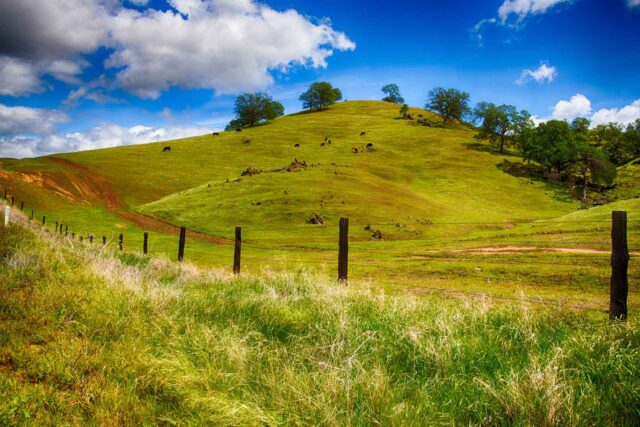This commentary was published in The Fresno Bee on July 22, 2022.
The San Joaquin Valley has faced air quality problems for decades. It is a major transportation thoroughfare and has historically been prone to particulate matter and dust issues that are often worsened by high-wind events and a pollution-trapping topography.
In recent decades, particulate matter concentrations have decreased—though wildfires have recently reversed some gains. But the valley is now facing another threat to air quality: the impending retirement of hundreds of thousands of acres of irrigated farmland to achieve groundwater sustainability. It’s imperative that regional, state, and federal actors take proactive measures to address these risks early.
The dangers of dust
Agricultural operations and wind erosion are two of the largest sources of dust in the valley. We project that over 500,000 acres of farmland may need to be taken out of production over the next two decades to help bring groundwater basins into balance under the 2014 Sustainable Groundwater Management Act (SGMA). This is an immense amount of land, and without careful stewardship, widespread fallowing could cause a surge in windblown dust.
The threats of dust are real. Both coarse and fine particulates can cause acute and chronic respiratory issues, as well as cardiovascular complications. Exposure to fine particulates also has been linked to dementia, reduced labor force participation and productivity, and developmental complications for the unborn, infants, and children.
To add to this toxic cocktail, Valley fever—which derives from a fungus that grows in soil across the Southwest—is on the rise and transmitted through windblown dust.
The valley’s poor air quality has taken a serious toll on human health, and the economic impacts are startling—one estimate puts the valley-wide costs of air quality-related health impacts at $3 billion per year. Emerging impacts from fallowing would likely be borne by low-income, rural communities first and foremost.
It’s important that the region gets out ahead of this problem. Our new research explores how proactive management to reduce dust emissions can deliver large benefits. Smart investments in monitoring to better understand rural dust can help guide future decision-making. Regional, state and federal agencies need to clarify what roles GSAs and landowners should play in mitigating dust, and identify new and existing sources of funding to support additional, ongoing mitigation efforts.
Ways to reduce risk
These approaches will need to be tailored to local conditions. The net effect of transitioning land from active agriculture to fallow appears to depend on the crop being grown, the level of disturbance on lands following their idling, and the time of year. Risks can be minimized by certain on-farm practices and the up-front identification of priority mitigation areas.
Maintaining vegetative cover is one of the simplest and most cost-effective ways to reign in dust from idled landscapes. Establishing this cover without irrigation, however, is a challenge. In a related study, we show that water-limited farming, with a small amount of irrigation to establish cover, could provide one path forward. Grazing is often a part of successful vegetation management and can provide economic returns from these lands, but if managed poorly can disturb soils and increase dust risk. Coordinated management of these lands to establish robust vegetative cover—or other measures to control dust—will be paramount.
Dust control projects are already happening on transitioning and fallowed lands across the West. One lesson is that reliable funding is needed to establish proactive dust management programs in the San Joaquin Valley. Groundwater sustainability agencies can provide local funding, the regional air district can administer state funding, and federal support can come from existing conservation and environmental incentive programs.
The San Joaquin Valley’s residents have endured some of the nation’s worst air quality for decades. A combination of wildfires and newly fallowed farmland could threaten recent important progress. But with foresight and planning, the region could take key steps to minimize these risks and ensure a healthier environment in a more sustainable valley.
Topics
agriculture air quality Drought groundwater groundwater sustainability health Health & Safety Net San Joaquin Valley SGMA Water Supply Water, Land & AirLearn More

Commentary: Drought Requires New Strategies for Managing Cropland

Could Rangeland Return to the Central Valley?

Dangers Lurk in the San Joaquin Valley’s Dust

Exploring the Potential for Water-Limited Agriculture in the San Joaquin Valley

Land Transitions and Dust in the San Joaquin Valley




